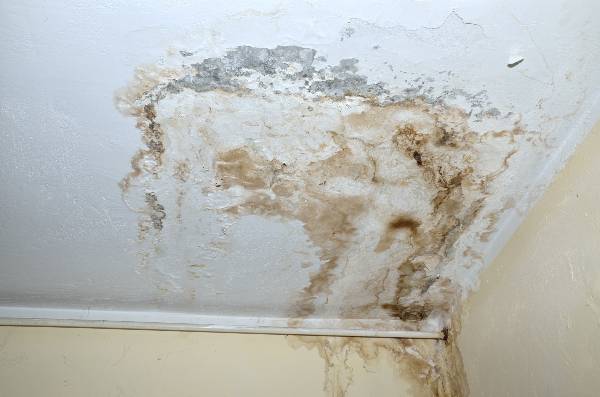How to Inspect If Your Home Has a Concealed Leak
How to Inspect If Your Home Has a Concealed Leak
Blog Article
This post listed below about Locating water leaks is particularly informative. You should take a look.

Early discovery of dripping water lines can alleviate a potential disaster. In addition to conserving you cash, it will certainly reduce the worry and also stress. The minute you find a leakage, calling your plumber for repair work is the most effective service. Nonetheless, some little water leaks might not be visible. If you can not detect it with your naked eyes, here are some hacks that assist.
1. Take A Look At the Water Meter
Every home has a water meter. Inspecting it is a guaranteed manner in which helps you discover leakages. For beginners, turn off all the water sources. Make sure no one will certainly purge, use the faucet, shower, run the cleaning maker or dish washer. From there, most likely to the meter and watch if it will certainly alter. Because nobody is utilizing it, there must be no movements. That shows a fast-moving leakage if it relocates. If you discover no changes, wait a hr or 2 and check back once again. This means you might have a slow leakage that could even be below ground.
2. Check Water Usage
Evaluate your water costs and track your water usage. As the one paying it, you must notice if there are any type of discrepancies. If you spot sudden changes, regardless of your usage being the same, it indicates that you have leaks in your plumbing system. Bear in mind, your water expense must fall under the very same range each month. An abrupt spike in your bill suggests a fast-moving leak.
At the same time, a constant rise on a monthly basis, despite the same routines, reveals you have a slow-moving leak that's additionally slowly rising. Call a plumber to extensively examine your residential or commercial property, particularly if you really feel a cozy area on your flooring with piping beneath.
3. Do a Food Coloring Test
When it involves water intake, 30% originates from commodes. Examination to see if they are running correctly. Drop flecks of food color in the container and wait 10 mins. If the shade somehow infiltrates your dish during that time without flushing, there's a leakage in between the tank and also bowl.
4. Asses Exterior Lines
Don't neglect to inspect your outside water lines too. Examination spigots by connecting a garden hose. Ought to water leak out of the link, you have a loosened rubber gasket. Replace this as well as ensure all links are limited. If you have actually obtained a lawn sprinkler, it will certainly aid get it properly examined and preserved annually. One little leak can waste lots of water as well as increase your water costs.
5. Evaluate and also Analyze the Situation
Home owners need to make it a behavior to examine under the sink counters and also even inside cupboards for any bad odor or mold and mildew development. These 2 red flags show a leakage so timely attention is called for. Doing regular evaluations, even bi-annually, can conserve you from a major problem.
Check for discolorations and also weakening as a lot of home appliances as well as pipelines have a life expectancy. If you believe leaking water lines in your plumbing system, do not wait for it to intensify.
Early detection of dripping water lines can mitigate a potential catastrophe. Some small water leakages may not be visible. Checking it is a surefire means that assists you uncover leakages. One little leak can waste lots of water as well as surge your water bill.
If you presume leaking water lines in your plumbing system, don't wait for it to intensify.
WARNING SIGNS OF WATER LEAKAGE BEHIND THE WALL
PERSISTENT MUSTY ODORS
As water slowly drips from a leaky pipe inside the wall, flooring and sheetrock stay damp and develop an odor similar to wet cardboard. It generates a musty smell that can help you find hidden leaks.
MOLD IN UNUSUAL AREAS
Mold usually grows in wet areas like kitchens, baths and laundry rooms. If you spot the stuff on walls or baseboards in other rooms of the house, it’s a good indicator of undetected water leaks.
STAINS THAT GROW
When mold thrives around a leaky pipe, it sometimes takes hold on the inside surface of the affected wall. A growing stain on otherwise clean sheetrock is often your sign of a hidden plumbing problem.
PEELING OR BUBBLING WALLPAPER / PAINT
This clue is easy to miss in rooms that don’t get much use. When you see wallpaper separating along seams or paint bubbling or flaking off the wall, blame sheetrock that stays wet because of an undetected leak.
BUCKLED CEILINGS AND STAINED FLOORS
If ceilings or floors in bathrooms, kitchens or laundry areas develop structural problems, don’t rule out constant damp inside the walls. Wet sheetrock can affect adjacent framing, flooring and ceilings.
https://www.servicemasterbyzaba.com/blog/how-to-detect-water-leakage-in-walls/

We were made aware of that report on Finding hidden leaks from an acquaintance on a different site. Sharing is nice. You just don't know, you will be helping someone out. Thanks so much for going through it.
Report this page